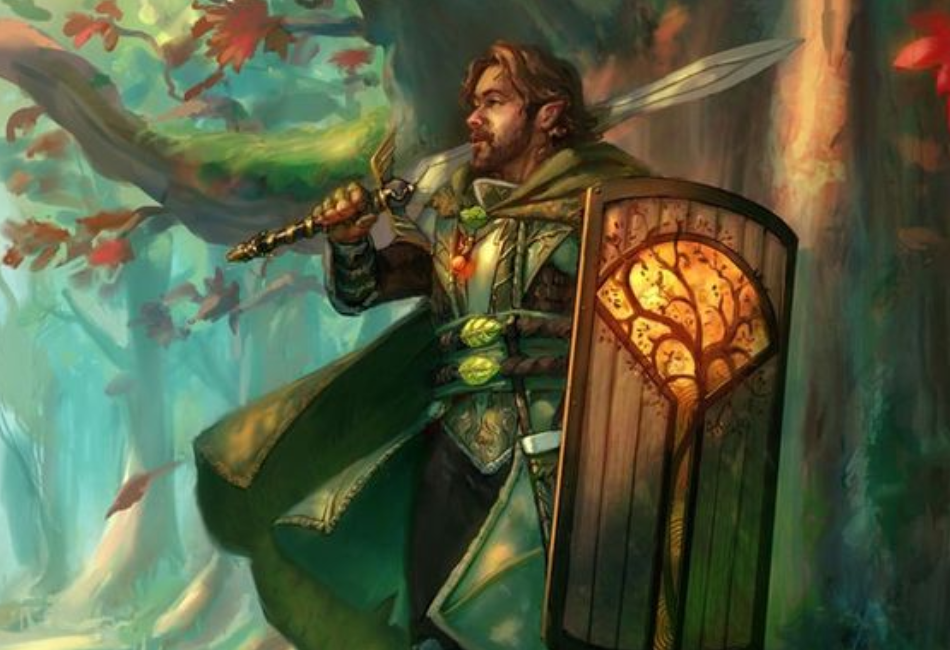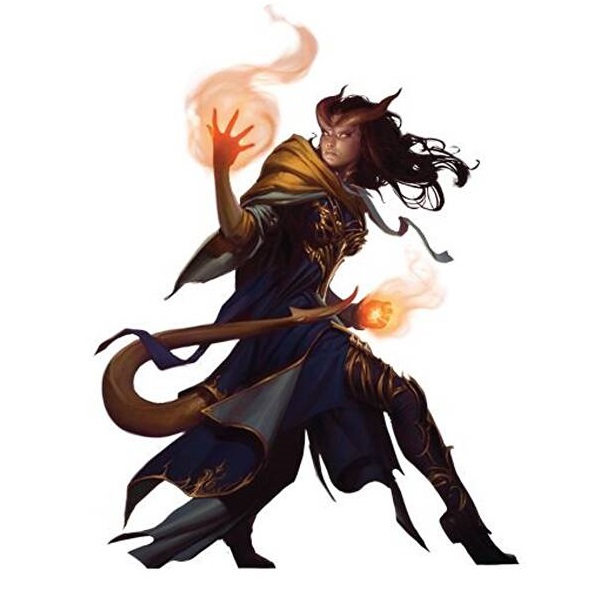What is an Oath of the Ancients Paladin?
The armor-clad knight wades forward into battle. He lifts his greatsword above his head and mutters under his breath as vines and thorns sprout from the blade. With a swift swing, the blade cuts the furious bugbear as vines lash out and wrap around the fur, biting deep into its flesh and restraining it.
The Oath of the Ancients paladin is a nature-based paladin that is devoted to the beautiful and life-giving things of the world. While a Paladin who has taken this Paladin oath may believe in virtues such as honor, it is primarily your devotion to the good in the world that drives you to preserve it.
The Oath of the Ancients has existed for centuries, striving to keep the light of the world alive and drive back hopelessness. Paladins of this subclass will find many overlapping values with rangers and druids, working towards preserving nature.
Like all paladin subclasses, the Oath of the Ancients has tenets that seek to uphold the values central to their cause. The tenets are:
- Kindle the Light: Do this by acting with mercy and kindness and maintaining hope in the world.
- Shelter the Light: Stand against forces of evil that would seek to destroy that which is good and beautiful.
- Preserve Your Own Light: Enjoy the beauty of the world around you.
- Be the Light: When you live with joy, that spreads to others.
When playing an Oath of the Ancients paladin, you should think about how you uphold these tenets, which ones are easy for you and which are more difficult to maintain. Welcome to an Oath of the Ancients 5e Guide.
Oath of the Ancients Features
You first gain your paladin subclasses at the 3rd level and gain subclass features at the 3rd, 7th, 15th, and 20th levels. You also gain access to additional oath spells firstly when you gain this subclass at the 3rd level, and at each level that you gain a higher-level spell slot: 5th, 9th, 13th, and 17th.
Oath Spells
As an Oath of the Ancients paladin, you gain access to additional spells which count as paladin spells for you regardless of which spell list they were originally from. These spells are automatically added to your list of prepared spells, you always have them prepared, and they don’t count when calculating the number of spells you can prepare.
For example, if you are a 3rd level Oath of the Ancients paladin with a Charisma modifier of +2, you can prepare three spells each day. Through your subclass, you have gained access to two additional prepared spells, bringing your total up to five. However, the two from your subclass cannot be swapped out for other spells.
Third Level
At the 3rd level, you gain Ensnaring Strike and Speak with Animals. The first is a bonus action spell ranger spell that allows you to wrap thorny vines around an enemy the next time you hit them with an attack.
Since this is a bonus action, you can cast this on your turn before you take your action to hit the enemy. On a failed Strength saving throw, the target is restrained, and while they have more chances to get out of their bonds, they must waste action and make a strength check to do so.
The target also takes damage at the start of every turn that they are restrained. This is an excellent way of shutting down an enemy, gaining an advantage on attacks against them, and forcing them to waste their action.
The latter allows you to speak with animals, which is thematically very appropriate but situational. Keep in mind that many of the more exciting animals in D&D are monstrosities and not beasts, so this spell will not work on them.
Fifth Level
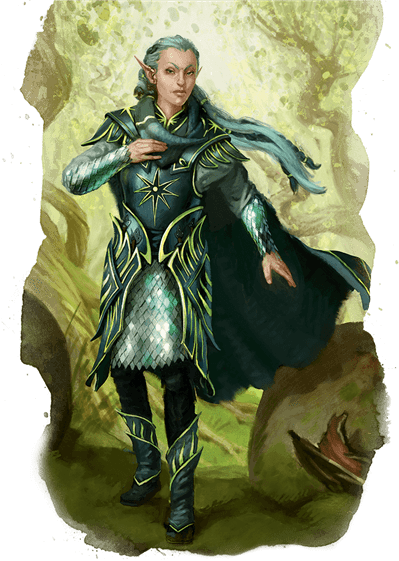
At the 5th level, you gain Moonbeam and Misty Step. The former is a decent low-level area effect. The radius is 5 feet which means that it takes up a 2×2 square on a grid, making it possible but unlikely to get multiple enemies in the area. An enemy takes damage at the start of its turn or when it enters the spell’s area for the first time on a turn.
This means that you can combine it with forced movement from the Crusher feat or the Shove action to push an enemy into the effect to take damage twice. While most casters will use Misty Step to get out of an enemy’s reach when they’re surrounded, a paladin can use it to get right next to whichever enemy they need.
Ninth Level
At the 9th level, you gain Plant Growth and Protection from Energy. The former allows for a powerful way to slow down enemy movement. However, make sure that the area that you’re casting it on has plants; otherwise, your DM might say it has no effect.
The latter allows you or an ally to gain resistance to a specific type of elemental damage. This can be very useful if you’re walking through the tundra or into a volcano or in any situation in which you can predict the damage you might be facing.
Thirteenth Level
At the 13th level, you can Ice Storm and Stoneskin. The former deals damage and creates rugged terrain for one round. The average damage on a failed save is 23, which is very low for a 4th level spell. Stoneskin grants you resistance to non-magical bludgeoning, piercing, and slashing damage for one hour.
While this is a great way to increase your defense, you’ll probably want the Resilient feat to shore up your concentration checks, so the spell doesn’t end early. It’s also worth noting that many high-level enemies deal magical damage, and you’re gaining this spell at quite a high level.
Seventeenth Level
Lastly, at the 17th level, you gain Commune With Nature and Tree Stride. The former allows you to gain information about the natural landscape within 3 miles of you. As a paladin, you cannot cast this spell as a ritual, meaning that you must expend the spell slot. Still, this can be a helpful way of quite literally getting the lay of the land if you’re in an unfamiliar area.
However, if you have a wizard in your party, let them use one of their copious spell slots to scout instead. Tree Stride enables you to teleport between trees of the same kind for a minute. In a forest, this can be a decent way of traveling great distances quickly. However, you’re likely to have other party members with better options that work in all types of terrain.
Channel Divinity Options (3rd Level)
You gain two Channel Divinity options as an Oath of the Ancients paladin. The first is called Nature’s Wrath. You use your action to summon vines to restrain an enemy, who must succeed on a Strength or Dexterity saving throw. At the end of each of its turns, it can repeat the saving throw.
This is similar to the 1st level spell Ensnaring Strike that you gain at 3rd level but worse because it deals no damage, the enemy can choose their saving throw, and it requires your action. The second Channel Divinity option is called Turn the Faithless.
It functions similarly to the cleric’s Turn Undead ability but also works on fiends. You use your action to force undead and fiends within 30 feet to make a Wisdom saving throw. If they fail, they have to run away for the next minute or until they take damage.
Aura of Warding (7th level)
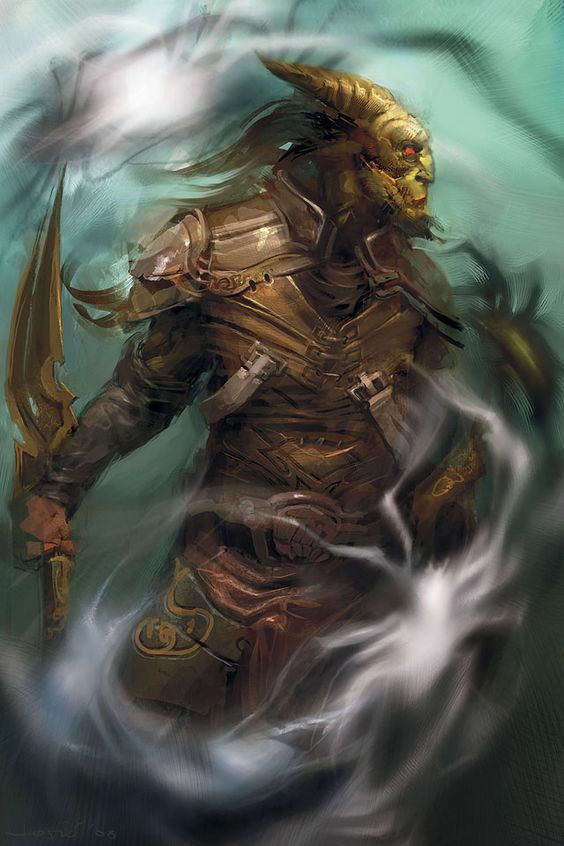
Most paladins at this level gain another aura. For the Ancients paladin, you and allies within 10 feet of you have resistance to damage from spells. Like all paladin auras, this increases to 30 feet at the 18th level. This can vary in effectiveness depending on how often you face enemy spellcasters in your adventures. Some DMs love using evil mages and even giving spells to their homebrew monsters, while others rarely do.
Undying Sentinel (15th Level)
This feature is like a built-in Death Ward. Once a day, you can choose not to fall unconscious and remain at one hit point instead. This means that if you are concentrating on a spell, you won’t lose concentration from falling unconscious. However, you will probably still need to make a check for taking damage.
Moreover, you don’t suffer the drawbacks of old age and can’t magically age. Arguably the biggest drawback of old age is dying, so this feature means that you cannot die simply from aging. However, you can still be killed.
Elder Champion (20th Level)
Lastly, you gain your capstone feature at the 20th level. Paladins are the only subclass whose capstone feature is also a subclass feature, making for a lot of interesting and powerful abilities. For an Ancients paladin, you can transform into a force of nature for one minute each day. You gain three abilities for this minute.
- You regain 10 hit points at the start of each turn.
- You can cast paladin spells as a bonus action instead of an action.
- Enemies within 10 feet have a disadvantage on saving throws against your spells.
Since you use your action to transform into this force of nature, you can use the same turn to cast a spell as a bonus action. While this makes you a force to be reckoned with, if you are expecting a long adventuring day, don’t use this too early, or you’ll have nothing left for the rest of the day. However, at the 20th level, you should have a good idea of when you’re facing the “boss” and when to unleash this.
Oath of the Ancients Spell Selection
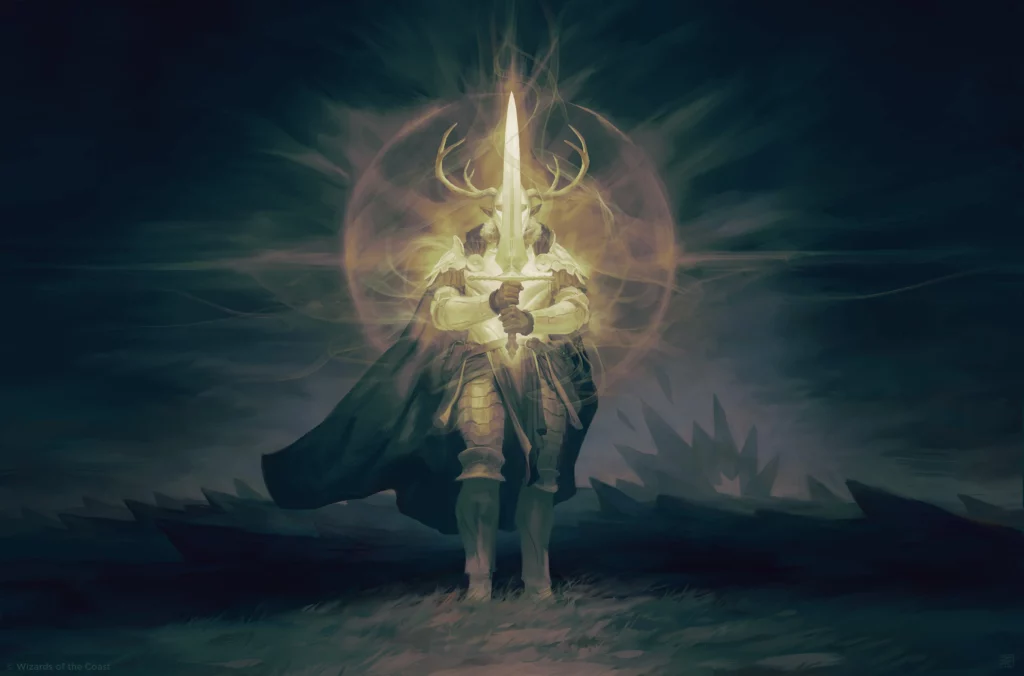
All paladins are half casters, gaining up to 5th level spell slots. This means that while some of your focus is on spellcasting, you will be splitting your ability scores between Strength and Charisma. This means that spells with saving throws (until 20th level) won’t have as high a spell save DC as a full spellcaster.
You always can prepare your spells each day, meaning if you pick spells you don’t end up liking, you can change them out after a long rest. This makes the paladin a great option for new players looking to use spellcasting as they learn the game.
1st Level
- Bless: Great at all levels. If you have a cleric in the party, let them cast it instead. If not, it’s a significant buff to three members of your party.
- Compelled Duel: Keep an enemy away from the squishier members of your party and force them to fight you instead.
- Protection from Evil and Good: If you’re venturing into dark and mysterious places, this is a great preventative measure against taking damage.
- Shield of Faith: Bonuses to AC have a greater effect the higher it is, to begin with, so adding two onto your already high AC is a significant boost.
2nd Level
- Aid: 5 hit points on three party members, and your hit point maximum increases. An excellent spell for every party to have. Like Bless, it’s better for a cleric or full spellcaster to upcast since they have more spell slots, but it’s a great spell to get in any way.
- Find Steed: What’s a paladin without a magical steed?
- Protection from Poison. While situational, this is a great thematic spell for a nature-based paladin who understands the sources of poison in the plants and creatures around them.
- Warding Bond. When someone else takes damage, you take half of it. Usually, this is a cleric spell, but it’s much better suited to your higher AC and hit points.
3rd Level
- Aura of Vitality: A great healing option for every party to use between combats.
- Blinding Smite: Many monsters require the ability to see to use their most powerful abilities and spells.
- Crusader’s Mantle: An additional 1d4 to every attack made by you and your allies within 30 feet of you. A 30-ft radius has a massive 168 free squares for allies to stand in. With a party making additional attacks, summoned creatures making attacks, and townspeople you recruited shooting arrows, you can do a lot of damage with this spell.
- Revivify: Bringing someone back from the dead is always a good option to have.
4th Level
- Death Ward: You get the effect of this spell for free once a day at the 15th level, but you can also cast this on your allies as well.
- Find Greater Steed: What’s better than a magical horse? A magical flying horse!
5th Level
- Circle of Power: Give all of your allies advantage on saving throws against spells, and they take no damage on success if they would take half damage on a success. The rogue and monk will still find this beneficial since Evasion only works on Dexterity saving throws.
- Destructive Wave: You don’t have a lot of ways to deal with area of effect damage, and this deals damage in every direction. There’s also no hard choice to make about getting away from your allies since you can choose who this spell affects.
- Holy Weapon: Everything you want out of a paladin’s magical weapon you can get from this spell: extra damage, holy light, and a detonation button to blind your enemies.
Oath of the Ancients Feat Selection
- Polearm Master: Whether you’re wielding a glaive or a spear and shield, this feat lets you take an additional attack as a bonus action, increasing your damage output significantly.
- Great Weapon Master: Two-handed weapon users will want this to deal as much damage as possible against low-AC enemies.
- Resilient Constitution: With many great concentration spells and a role on the frontline, you want a reliable way to maintain concentration. This gives you proficiency in Constitution saving throws.
- Shield Master: Cast Moonbeam where your enemy stands and then wait 10 feet away from them. Let them take one step forward, and then, on your next turn, attack them and knock them back in the Moonbeam as a bonus action. They’ll take the damage for entering the effect and then on the start of their turn as well.
Oath of the Ancients Multiclass Options
Paladins multiclass well with Charisma-based spellcasters. Most paladins who plan to multiclass do so after six levels in paladin. If you find you are facing a lot of enemy spellcasters, you might consider taking seven to get Aura of Warding before multiclassing.
Bard:

A Charisma-based spellcaster. This will increase your spell slots if you’re just interested in smiting, but consider leaning into the fey theme and choose the College of Glamour to excel at being charming.
Sorcerer:
A classic and population combination for increased spell slots with the bonus addition of metamagic, making for great combinations like quickening Hold Person to automatical score a critical hit and smite an enemy in one turn. Thematically, the Draconic Bloodline works well alongside an ancient paladin oath that’s been sworn to for centuries.
Warlock:
Another classic combination used to add spell slots and make a powerful character. With one level in Hexblade, you can focus just on Charisma as both your attacking modifier for weapons and spells. However, consider what otherworldly entity an Ancients paladin might encounter in their travels: an ancient Archfey in a grove where the veil between worlds is thin?
An unknown aquatic creature that reaches out through the waters that the paladin has sworn to protect? Or perhaps the oath to kindle the light grants a powerful lich access to such much more life energy to feed on.
F.A.Q.
Question: Is Oath of the Ancients good?
Answer: Yes, Ancients paladins are a great and straightforward subclass for new and experienced players to choose.
Question: How do you play Oath of the Ancients Paladin?
Answer: While it’s tempting to smite on every attack, save them for critical hits, and even then, only when you think the enemy still has a lot of hit points. Instead, you have great ways of restraining, slowing, and controlling the battlefield between Ensnaring Strike, Moonbeam, and Plant Growth.
Question: Does Undying Sentinel make you immortal?
Answer: No. You are not immortal in that you can still be killed. But the feature says that you don’t suffer the drawbacks of old age. Death is arguably the biggest drawback of old age, so you cannot die from aging.
Question: Can paladins change their oaths?
Answer: Yes. Changing your oath as a paladin is also changing your subclass, so this is something to discuss with your DM. Rules for changing your subclass can be found in Tasha’s Cauldron of Everything. Your DM might require you to train to learn new tenets, or perhaps you experience something that drastically changes your beliefs.
Question: Should oath spells be prepared?
Answer: Your oath spells are always prepared. When preparing spells, you don’t count your oath spells. Instead, you just always have them.
Summary
The Oath of the Ancients paladin is a powerful nature-based gish warrior designed around tanking damage and controlling the battlefield with druid and ranger spells. Paladins who take this oath often adopt very nature-themed titles and aesthetics, with a capstone ability that turns you into a force of nature itself.
Playing an Ancients paladin is an excellent option for new and experienced players. You have good AC and hit points, can attack with a weapon, and have some spellcasting as well. If you’re unsure about what spells to cast, you can use your spell slots to smite instead. If you pick spells that you don’t like, you can change them out at the start of each day, so you’re not locked in if you make a terrible choice.
- Armor of Agathys 5e Guide: What is Armor of Agathys? - August 3, 2022
- Oath of the Ancients 5e Guide - August 3, 2022
- Dissonant Whispers 5e Guide - July 20, 2022

